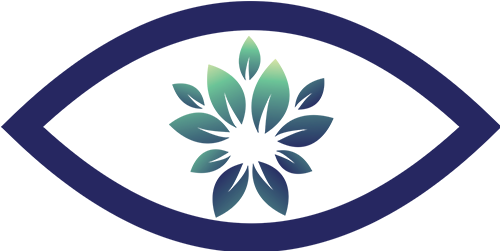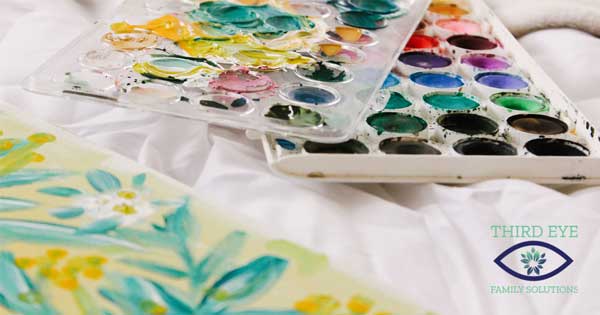- Jen and Johnathan looked at his self-portrait. He had drawn himself playing a video game and everything except the screen was dark, including his skin. “It just feels like there is no light anywhere in my life,” he explained.
- Kathie spoke excitedly about her upcoming birthday party as she drew a picture of her family. Unlike her last few drawings, this one clearly showed each member of the family. There was a clear division, however, between mom and dad who had recently divorced. “They live in different places now,” she explained, “but they both still love me.”
- After about 15 minutes of work, Chelsea had created a collage using pictures from various magazines. She had spoke to Jen while she worked about the confusion in her career and her hesitance to change jobs even though there was a better paying opportunity being presented to her. While reflecting on her collage she was able to see how her fear of the unknown – represented with images of dark doorways – was shaping her decision.
These are just a few examples of the ways that art can be used as a therapeutic practice.* When we create art, we capture the feeling of our experience. Often, those feelings get lost or diluted when we try to express them in words. Images, however, can illuminate something deeper than what language can communicate.
Research Into The Effectiveness of Art in Counseling is Extensive
Art-based research has grown in scope as well, as researchers (including Jen!) use art experiences to have participants express things in different ways. One of the most well-known uses of art based therapy is when children who have experienced trauma use art to ‘talk’ about the difficult things that they have experienced. This is only one use of art in counseling. You can read more about the history and application of art therapy HERE.
Like Play Therapy, Art Based Therapy can be Either Directed or Undirected
Directed activities look like the clinician asking the client to create a particular kind of art – drawing a picture of one’s family, creating a painting of a place that feels peaceful, or creating a collage with a particular question or problem in mind. In undirected art activities, the client chooses a medium and creates whatever they choose, often while talking with the clinician about whatever is on their mind. The art may or may not be related to the conversation – often in these instances the art is a relaxation technique for the client and makes talking easier for them.
Analyzing Art is Not Always Essential
Often it gives us insight into the feelings of the client. One client suffering from depression was unable to think of anything to represent happiness in an art activity, which led to a discussion of the things that used to make him feel happy. He later joined a gym when he remembered that working out was one of the few hobbies he had that gave him a sense of accomplishment as well as peace. Sometimes, simply commenting on the colors used or the sizes of people in a drawing can open up a dialogue about the way a client is experiencing their life.
Teens and adults often remark “I’m not really good at art,” which is a common concern. We remind our clients that these art activities are about the process and the expression, not the quality of the finished product. In fact, it isn’t even always important to finish the project! The process itself is the most important part of creating art.
Art activities aren’t always the right modality for our clients, but when they are used they can be a critical component of healing, moving into different emotional spaces, and understanding one’s own feelings. Don’t be afraid to engage in some art based therapy – the results may surprise you!
*Disclaimer: Neither Jen nor Jaime is a certified art therapist, however, we both have training in using art in therapeutic ways with our clients.


Recent Comments